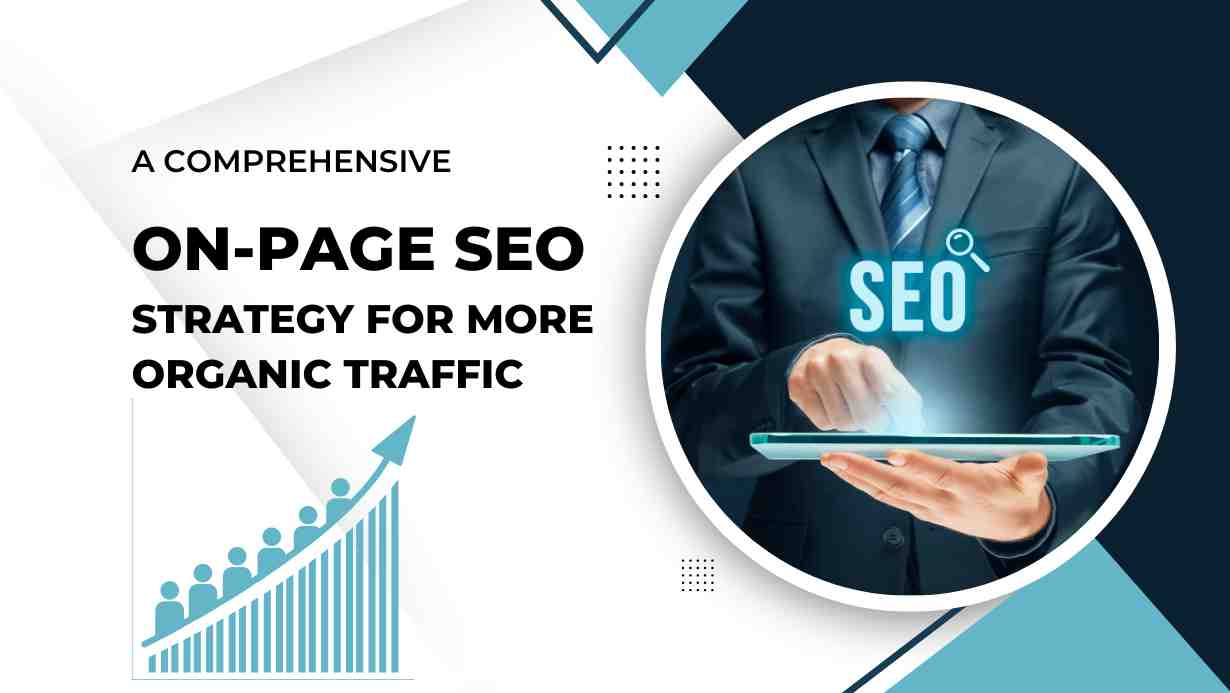Hello friends, How are you? I am Khurshed Alam, here I will share A Comprehensive On Page SEO Strategy for More Organic Traffic and Google Top Ranking.
Your website’s on-page SEO must be flawless to dominate search engine rankings and attract more clients. This strategy outlines the essential steps for optimizing your website, ensuring maximum visibility and engagement.
A Comprehensive On Page SEO Strategy:
1. Keyword Research: The Foundation of SEO Success
- Identify Primary Keywords: Choose high-volume, business-relevant terms that align with your goals.
- Discover Long-Tail Keywords: Target specific, low-competition phrases to attract highly targeted audiences and improve conversion rates.
- Competitor Analysis: Analyze competitors’ keyword strategies to uncover gaps and opportunities for your site.
2. Crafting High-Impact Content
- Title Tags: Craft compelling titles with primary keywords, keeping them concise (under 60 characters) and engaging.
- Meta Descriptions: Write persuasive meta descriptions (150-160 characters) with relevant keywords to increase click-through rates.
- Headings (H1, H2, H3, etc.): Structure content with headings that naturally incorporate keywords, enhancing readability and SEO.
- Content Quality: Prioritize originality, depth, and value in your content. Aim for comprehensive articles that engage and inform your audience.
- Keyword Placement: Integrate keywords naturally within the content, headers, and alt text. Avoid overstuffing.
- Content-Length: Longer content (1,000+ words) generally ranks better, but always maintains high quality and relevance.
3. SEO-Friendly URL Structure
- Descriptive URLs: Use short, keyword-rich URLs (e.g., example.com/seo-tips) that clearly describe the page content.
- Avoid Special Characters: Keep URLs clean and simple, using hyphens to separate words.
4. Internal Linking for Enhanced Navigation
- Strategic Links: Link to other relevant pages on your site to distribute link equity and improve user navigation.
- Keyword-Rich Anchor Text: Use descriptive, keyword-rich anchor text for internal links to boost SEO.
- Content Siloing: Organize content into logical categories to improve site structure and relevance.
5. Image Optimization: Boost Visual Content Visibility
- Alt Text: Describe images with relevant keywords to enhance search engine understanding and accessibility.
- Optimized File Names: Use descriptive, keyword-rich file names for images.
- Compress Images: Reduce file sizes to ensure fast page load times, improving user experience and SEO.
6. Mobile Optimization: Cater to All Devices
- Responsive Design: Ensure your website is mobile-friendly and adapts seamlessly to different screen sizes.
- Mobile Speed Optimization: Enhance mobile load times to keep visitors engaged and improve rankings.
7. Accelerate Page Speed for Better User Experience
- Optimize Load Times: Use tools like Google PageSpeed Insights to identify and fix performance issues.
- Resource Optimization: Minimize CSS and JavaScript files, leverage browser caching, and optimize images to reduce load times.
8. User Experience (UX): Delight and Engage Visitors
- Intuitive Navigation: Ensure easy-to-use site navigation with clear menus and logical structure.
- Readable Content: Use legible fonts, adequate spacing, and a clean design to enhance readability.
- Compelling CTAs: Incorporate clear, persuasive calls to action to guide visitors toward conversion.
9. Leverage Schema Markup for Enhanced Search Results
- Structured Data Implementation: Apply schema markup to improve search engine understanding and enhance rich snippets.
- Relevant Schema Types: Utilize schemas like Article, Product, Local Business, etc., to improve search visibility.
10. Master Technical SEO for a Solid Foundation
- XML Sitemap: Regularly update and submit your sitemap to Google Search Console for better indexing.
- Robots.txt Configuration: Ensure your robots.txt file is set up correctly to avoid blocking important pages.
- Canonical Tags: Implement canonical tags to prevent duplicate content issues and consolidate page authority.
11. Local SEO for Targeting Local Audiences (if applicable)
- Google My Business Optimization: Complete and optimize your Google My Business profile with accurate, up-to-date information.
- Location-Specific Keywords: Incorporate local keywords into your content and meta tags to improve local search visibility.
- NAP Consistency: Ensure consistent Name, Address, and Phone number (NAP) information across all directories.
12. Continuous Monitoring and Iteration
- Performance Analytics: Utilize Google Analytics and Search Console to monitor site performance and make data-driven adjustments.
- Regular Content Updates: Keep content fresh and relevant by updating it regularly, ensuring it remains valuable to users and search engines.
Additional Considerations for Advanced On-Page SEO
- Keyword Density Check: Ensure optimal keyword usage with tools like SEORankMath or Yoast, avoiding keyword stuffing.
- Avoid Keyword Cannibalization: Prevent multiple pages from competing for the same keywords by careful planning and keyword distribution.
Implementing these on-page SEO strategies will not only enhance your website’s search engine rankings but also improve user experience, leading to higher engagement and conversion rates. By providing valuable content, optimizing technical aspects, and continuously refining your approach, you’ll position your website as an authoritative and trusted resource in your industry.
This comprehensive approach is designed to attract and retain clients, driving sustained growth for your business.
